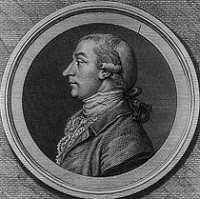Whitemarsh: Part 5 of 8
Burning Down the Houses
Washington would not let the British rest in peace. Though Washington ruled out a full-scale attack on Philadelphia, he nonetheless posted skirmishers outside the British defenses north of city. These troops harassed the British positions. The British found the raids so irksome that they burned down houses that had been launching points for American troops during the raids. At least ten families, and probably closer to twenty, lost their homes. A local Quaker woman reported that the British talked of "burning all houses within four miles of the city without the lines." The destructive torching campaign helped build a bonfire of resentment against the British.
November ended with yet another war council, this one to determine where winter quarters should be. Three choices were proffered: a camp at Wilmington, a movement west toward the supply cities of Lancaster and Reading, or a line of troops which would stretch between the Delaware and Schuylkill Rivers. Each plan had its merits and drawbacks as well as supporters and detractors. Washington could not make a choice and so asked his advisors to put their thoughts in writing. The commander in chief was torn by his own indecision. To trusted advisor Joseph Reed he wrote, "I am exceedingly embarrassed not only by the advice given me but in my own judgment."
Yet more immediate concerns made the matter moot.




